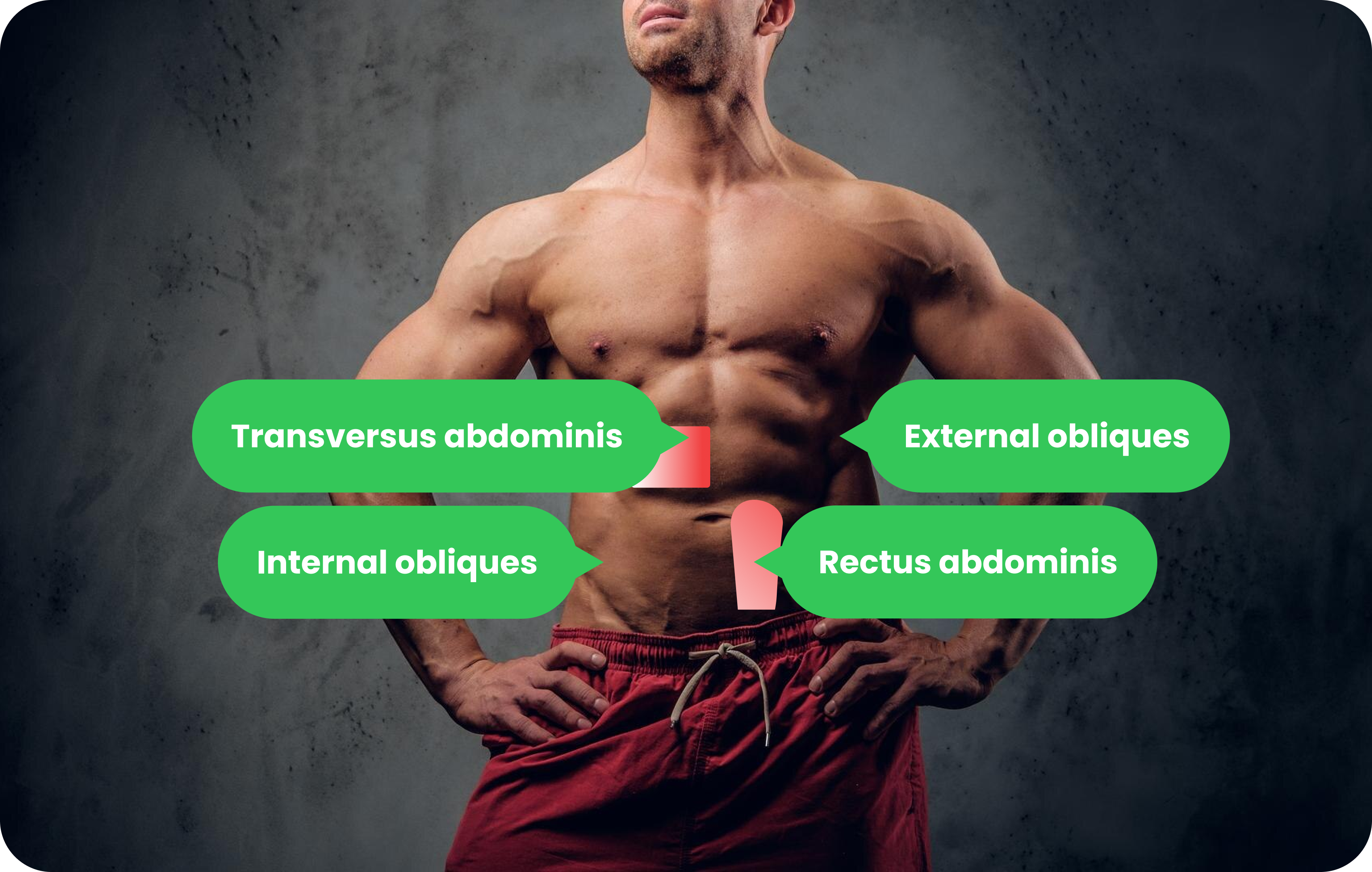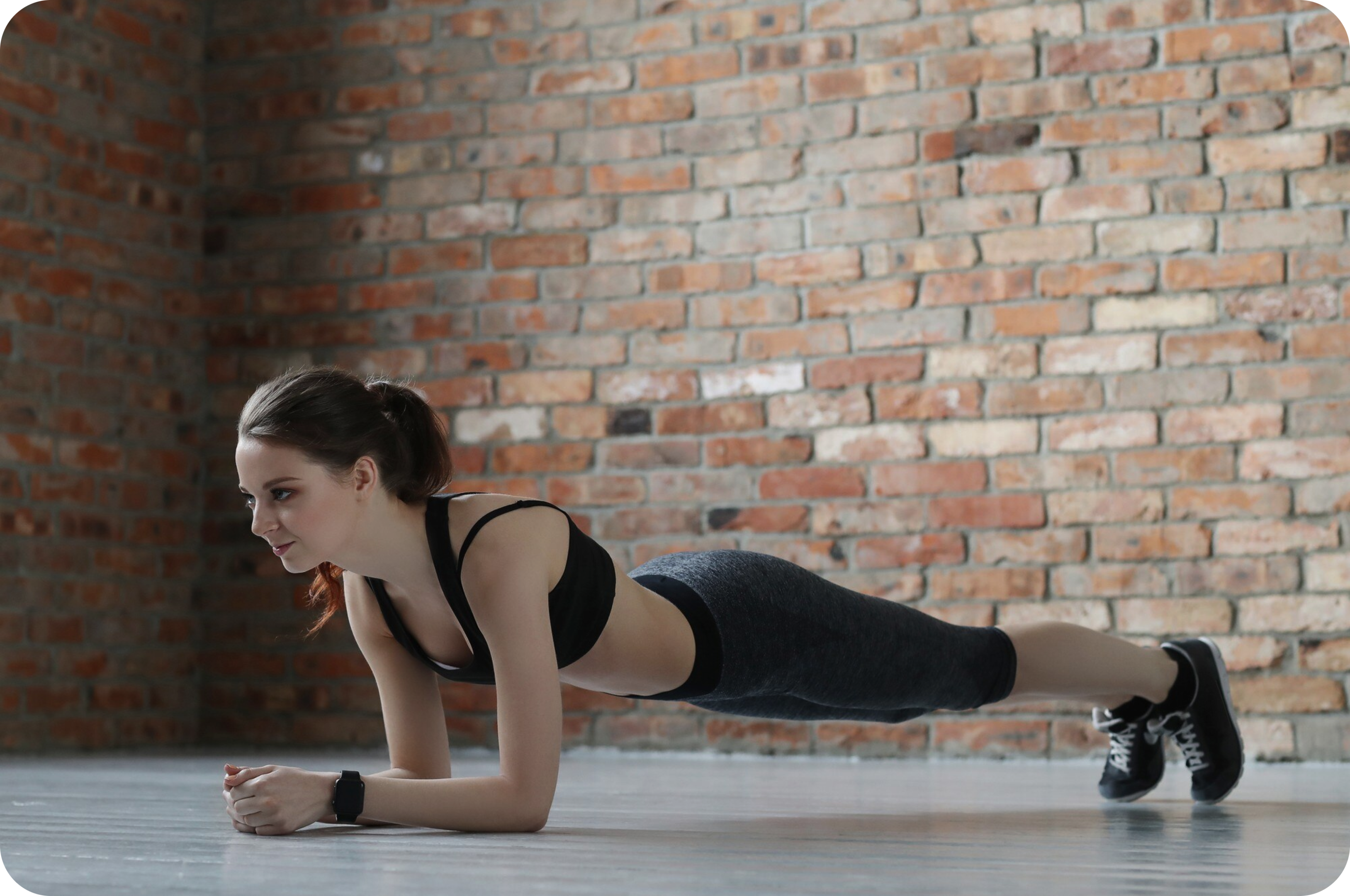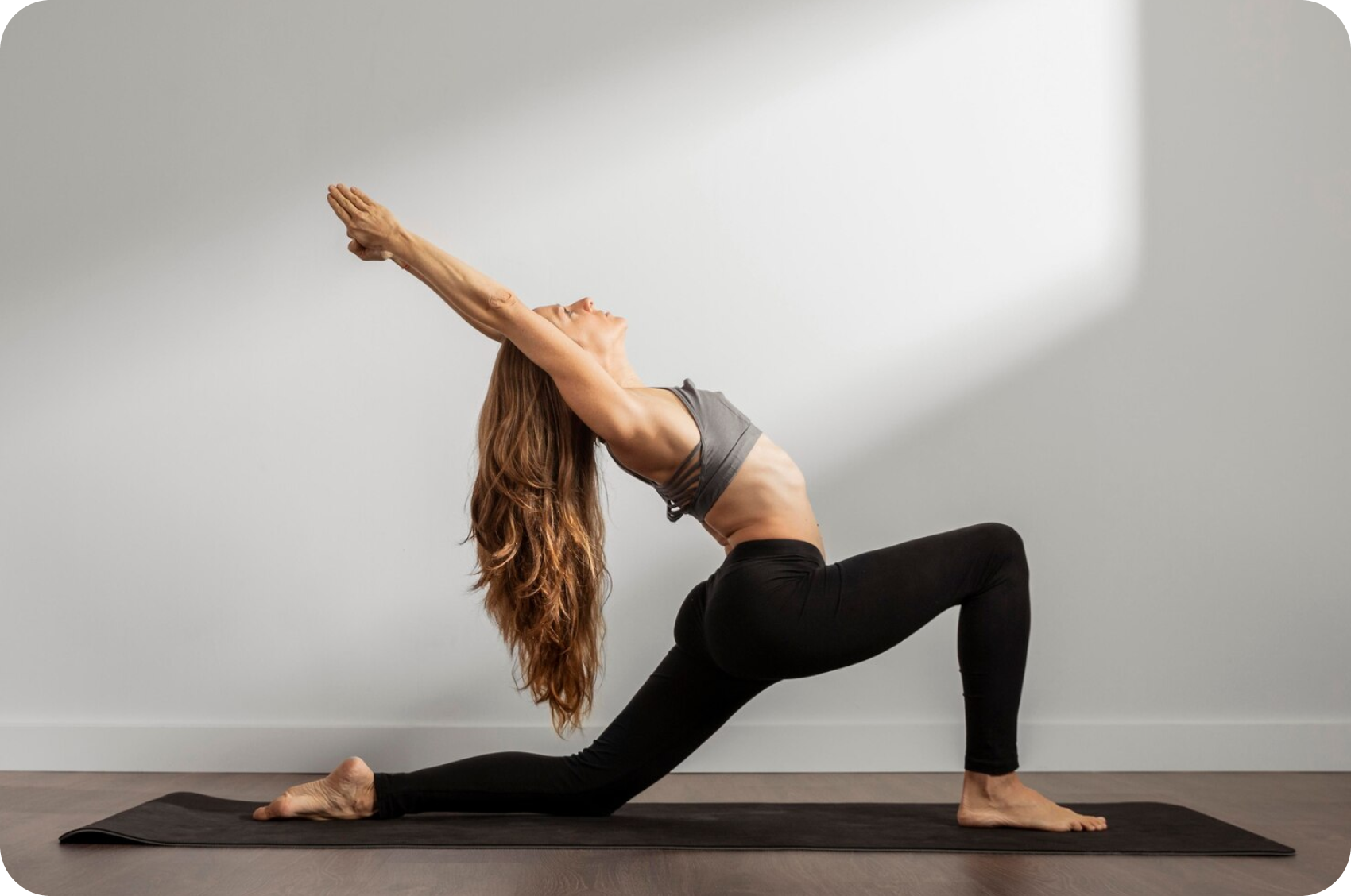Can running give you six-pack abs?
It’s a question I hear often, and it’s no wonder – who wouldn’t want sculpted abs?
Running offers a myriad of benefits.
It helps reduce tension and stress, boosts heart health, and enhances cardio-respiratory fitness. However, if you’re expecting your runs alone to carve out those abs, you might be setting yourself up for disappointment.
Every time you hit the pavement, your core muscles are engaged, giving you a solid workout. But is this enough to achieve those coveted abs?
And what do we even mean when we talk about ‘getting abs’?
Let’s find this out.
CTA
Upgrade your gear
Find the perfect kit for your race
Understanding Abs: The Anatomy of Abdominal Muscles
Abdominal muscles, often called “abs,” are a group of muscles in your stomach area.
They help support your body when you move, keep your organs in place, and play a big role in your posture and balance. These muscles also assist in breathing and protecting your spine.
- PyramidalisA small, triangular muscle located in the lower abdomen. It helps tense the lower part of the rectus abdominis.
- Rectus AbdominisThis is the long, flat muscle that runs down the front of your abdomen. It’s often referred to as the “six-pack” muscle and helps with flexing the spine, like when you do a sit-up.
- External ObliquesThese are on the sides of your abdomen, running diagonally. They help with twisting movements and bending sideways.
- Internal ObliquesLocated just under the external obliques, these muscles also run diagonally but in the opposite direction. They work with the external obliques to twist the body and bend it sideways.
- Transversus AbdominisThis is the deepest abdominal muscle, wrapping around your sides and spine like a corset. It helps stabilize the spine and compress the abdominal contents.
Together with your back muscles, your ab muscles form your “core.” They protect your spine and help keep your body stable and balanced.
Having “abs” means having a strong core that can sustain all forms of exercise.
Visible abdominal muscles result from a combination of low belly fat and well-conditioned core muscles.

How Running Impacts Body Fat and Abdominal Muscles
There are two primary ways how running can help you get those visible abs: core engagement and fat burn.
1. Core engagement
Every time you run, your core muscles, including your abs, are constantly working to keep your body stable and balanced.
This is because running involves a lot of dynamic movement – your body is in a constant state of motion, and your core has to engage to keep you upright and moving efficiently.
Each step you take forces your abs to stabilize your pelvis, support your spine, and manage the impact of your feet hitting the ground.
Over time, this consistent engagement strengthens your deep abdominal muscles and improves their endurance.
2. Abdominal fat burn
Running is one of the most effective cardio exercises for burning calories.
Studies show that running is an effective way to reduce belly fat, which is considered the most dangerous type of fat in the body.
When you run, your body uses energy from fat stores, leading to a reduction in overall body fat and creating a lean muscle mass.
Since ab muscles are often hidden under a layer of fat, reducing this fat through running can make your abs more visible.
A consistent running routine can help lower your belly fat percentage, which is crucial for revealing toned ab muscles.
In addition, running boosts your metabolism, which helps you lose fat even when you are not exercising.
The Importance of Body Fat Percentage in Visible Abs
Body fat percentage plays a key role in having visible abs.
When your body fat is high, a layer of fat covers your abdominal muscles, making them less noticeable. To reveal those muscles, you need to lose fat.
This reduction allows your abs to become more defined and visible. Strong abs are not enough; you need a combination of strong muscles and a low belly fat percentage.
Achieving this balance typically involves a mix of exercise, like running and strength training, along with a healthy diet. In essence, to get visible abs, you need to reduce your belly fat so the muscles can show through.
Effective Running Techniques for Building Core Strength
Adding running techniqueі to your training can help you start building strong abdominal muscles today, even though running alone won’t create abs for you.
Here are a few tips on how to get a six-pack as a runner.
Incorporate Speedwork
High-intensity interval training is highly effective for burning both visceral and subcutaneous fat in the abdomen. Adding a few sprint days to your weekly running schedule can make a big difference.
You can add some structured intervals to your training. For example, try doing 10-15 reps of 100-meter sprints. Take a 30-40-second slow run break between sprints.
Alternatively, you can use Fartlek training. It involves unstructured bursts of speed to burn calories and improve ab definition.
Remember, these intense sessions shouldn’t be part of every run but incorporated strategically into your fitness routine.
Do Hill Runs
Hill climbs and sprints are excellent for activating your core muscles more intensely, which helps in developing those abs. To effectively run hills, choose either one large hill or a series of small hills.
For short hills, run up without stopping, then walk down and proceed to the next one. For a larger hill, set a specific time to run up, then take a short walking break before repeating.
This method engages your core muscles more, leading to faster development.
Recover Appropriately
Balance is crucial. Running non-stop without rest days or recovery periods will only break your body down.
It’s during rest that your body rebuilds and gets stronger. Incorporate rest days into your schedule to allow your muscles to recover and grow.
This approach prevents overtraining and keeps stress hormones like cortisol in check, promoting muscle growth and overall fitness.

Nutrition for Core Muscles
If you want to achieve defined abs, you must also take care of your nutrition.
Proper nutrition is essential for both fat loss and developing and maintaining strong core muscles. Here are some key elements to focus on:
Protein Intake
Protein is vital for muscle repair and growth. Aim to include lean sources of protein in your diet, such as chicken, fish, eggs, beans, and legumes. Consuming protein after workouts helps repair and build your abdominal muscles.
Healthy Fats
Incorporate healthy fats from sources like avocados, nuts, seeds, and olive oil. These fats support overall health and can help reduce inflammation, which aids in muscle recovery.
Complex Carbohydrates
Carbohydrates provide the energy needed for your workouts.
Opt for complex carbs like whole grains, sweet potatoes, and brown rice. These provide sustained energy and help maintain stable blood sugar levels.
Hydration
Staying hydrated is crucial for muscle function, recovery, and burn fat.
Drink plenty of water throughout the day, especially before, during, and after your workouts. Dehydration can lead to muscle cramps and hinder performance.
Fruits and Vegetables
Fruits and vegetables are rich in vitamins, minerals, and antioxidants that aid muscle health and recovery. They help reduce inflammation and provide essential nutrients for overall wellness.
Overall, you want to ensure your meals are balanced, incorporating protein, healthy fats, and complex carbohydrates.
A well-rounded diet supports overall fitness and helps you lose weight and achieve your goal of strong, visible abs.
Minimize the intake of processed foods, sugary snacks, and unhealthy fats. These can lead to higher body fat percentage and hinder your progress in developing core muscles.
Incorporating Running, Strength Training, and Core Exercises
To achieve strong and visible abs, combining running with strength training and core exercises is essential.
Here’s how to incorporate all three effectively:
Strength Training for Muscle Building
Strength training is vital for overall muscle development, including your core.
Focus on compound exercises that engage multiple muscle groups and incorporate specific core-strengthening moves.
- Compound ExercisesInclude exercises like squats, deadlifts, lunges, and bench presses. These movements work your entire body, including your core, and help build overall strength.
- Core-Specific ExercisesAdd exercises like planks, core twists, and hanging leg raises to directly target your abdominal muscles. These moves help build core strength and stability.
Incorporating specific core exercises into your routine will help you develop the muscle definition needed for visible abs.
Planks
Hold a plank position, keeping your body straight and engaging your core. Start with 30 seconds and gradually increase the duration as you build strength.
Core Twists
Sit on the floor with your knees bent and feet off the ground. Twist your torso to the right, then to the left, holding a weight or medicine ball for added resistance.
Hanging Leg Raises
Hang from a pull-up bar and lift your legs towards your chest, keeping them straight. This exercise targets the lower abs and builds core strength.

Creating a Balanced Routine
To create a balanced workout routine, combine these elements throughout your week:
- Running: Schedule 3-4 running sessions per week, mixing steady-state runs and HIIT workouts.
- Strength Training: Include 2-3 strength training sessions per week, focusing on different muscle groups each day.
- Core Exercises: Incorporate core-specific exercises into your strength training sessions or dedicate a separate core workout 2-3 times per week.
When combining running, strength training, and core exercises in a balanced routine, you can effectively work towards strong, visible abs and overall fitness.
The Importance of Measuring Body Fat for Leaner Abs
There’s a popular saying among coaches, trainers, and dietitians: “What gets measured gets managed.”
This means that if you want to control something in your life, you’ll achieve better results if you measure it regularly. This principle is especially true when it comes to getting leaner.
Measuring your body fat gives you an objective way to track your progress towards a leaner physique. The simplest method is to use a body fat scale at home.
These scales use bioelectrical impedance, sending a small electrical impulse through your body to accurately estimate your body fat percentage.
The American Council on Exercise provides the following body fat percentage guidelines:
Men
- Essential Fat: 2-4%
- Athletic Range: 6-13%
- Fitness Range: 14-17%
- Acceptable Range: 18-25%
Women
- Essential Fat: 10-12%
- Athletic Range: 14-20%
- Fitness Range: 21-24%
- Acceptable Range: 25-31%
Once you know whether you have a high or low body fat percentage, set incremental goals to reduce it, checking your progress every two weeks. If you’re above the acceptable range, start with a modest goal to move into this range. If you’re already within the acceptable range, aim to reach the fitness range.
Don’t rush to hit the bottom of the athletic range. Not everyone can safely achieve this, and it takes time.
While there’s no specific body fat percentage that guarantees great-looking abs, actively reducing your body fat through good nutrition and core conditioning will help you develop abs that are visible and impressive.
It’s important to measure and manage your body fat percentage so you can achieve a leaner, more defined body.
Wrapping Up: Can Running Give You Abs, or Is It a Myth?
In summary, running can be a valuable part of a fitness routine focused on developing abs. However, to achieve the best results, combining running with targeted ab exercises, a comprehensive workout plan and proper nutrition focused on reducing body fat is important.
Keep in mind that each person is unique, and the visibility of abs depends on factors like genetics and body fat percentage.
At TriWorldHub, we offer resources and coach support to help you enhance your training and nutrition.
Keep on running!




